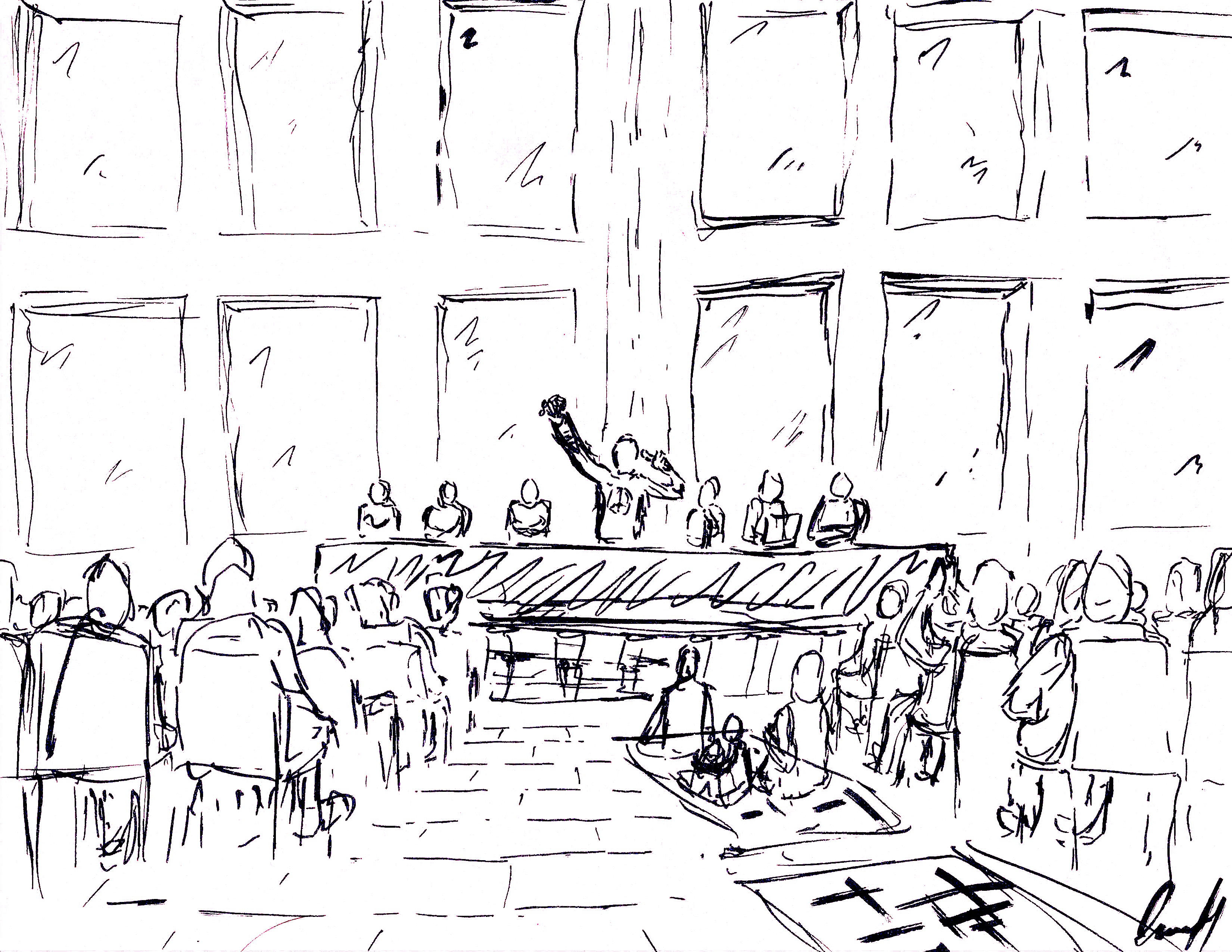
“In worship we listen very carefully. Sometimes a person feels something happening inside that won’t go away. That person listens very hard to answer questions: “Is this from God or from somewhere else? Is this for me only, or for the group? If it is for everyone, do I share it now or later?” Sometimes the person feels words inside that are from God, that are for everyone, and that are for now. Then the person shares the message in a clear voice so everyone can hear the message.” These words are from the Faith & Play story, “Prayer and Friends Meeting for Worship,” that explores the spiritual practices in meeting for worship, including vocal ministry. How can we use experiential learning to explore with young people how Friends share Spirit-led vocal ministry as part of our communal worship? How can we provide opportunities to learn about and practice discerning the source of what we’re led to share, and lifting up our voice in community?
Openings for children to share their Light begin with creating safe spaces for them to share. The time we spend gathering and “building the circle” in programs for children and youth welcomes young people into spiritual community. Inviting each other to share and practicing deep listening when we do introductions or begin programs should be part of our process every time we gather. Before starting a lesson or story in the circle of children at meeting, we take the time to introduce newcomers and share something from our week. An exercise that I sometimes use in a new group is to invite each person to bring and share about a small object that is special or has significance to them. Set up a small table in the center of a circle and invite Friends when ready to share why the object they have brought is special to them, and place it on the table. You build a scared space together where images, words, and feelings can all be shared.
A way to approach worship sharing with children or in multigenerational groups is “Heart Sharing.” In Heart Sharing, we lift up a query for response, inviting the response to be “from the heart” and just a word or two. Rather than a thought-out response from the mind, it is from the heart. You can do Heart Sharing in a whole group, or break into smaller multi-age groups of 3-4 with suggested queries. Heart Sharing taps into the here-and-now of children’s spirituality. Children don’t necessarily differentiate between worship time and play time or work time. When we move beyond (or back from) the intellectual nuances and details often in adult responses, we make space for everyone to share from where they are.
Faith & Play stories are tools for teaching children about our faith and practice as Friends. The “wondering questions” that follow sharing a Faith & Play story make space for children to listen and reflect inwardly, or to wonder out loud with the group. The open-ended wondering questions can be used in response to any kind of story, whether it’s a Bible story, a children’s book, or asking how a child’s day at school went. The questions are open, invitational, and there are no “right” (or “wrong”) answers when we wonder together. It’s a place where all voices are invited, and yet not forced (children in the circle are not called on to answer the queries). There is also room for silence in this practice; when no one shares out loud, we can trust that wondering is happening inside. We can allow the pauses and spaces to model our Quaker practice of waiting worship and practice deepening how we listen inwardly. After many years of storytelling, I came to see the wondering time after the story as a place for children to practice sharing vocal ministry and hear their voices lifted up in the spiritual community.
How do we “teach” the practice of listening for God and knowing when a message is from Spirit and for us to share with the whole group? You can find several versions of “vocal ministry flow charts” from different Quaker sources online and see how they speak to you. One or more of them could be given to small groups and discussed, or you could make them into a kind of movement activity, like “red light, green light”: if the answer to one of the questions you ask yourself is yes, it’s a green light. If no, it’s “stop” and return to center. Teens at Friends Meeting of Washington were inspired by writing on this topic to create a skit for their meeting community about vocal ministry. The “Vocal Ministry Skit” is a playful and insightful resource to share, and can be found posted on the Quaker Religious Education Collaborative’s website. It’s a great conversation starter for a multigenerational group, as the skit requires “audience participation” and references contemporary tensions that can occur as we listen to the still small voice within.
Another resource that might be of interest to youth and multiage groups of teens and adults is the QuakerSpeak video, “How to Deepen Quaker Meeting for Worship.” At the 4:34 minute mark, a speaker lifts up several of the questions about when and whether to speak but stretches that discernment to include a question we might ask after sharing: “Do you feel that you were faithful in your speaking?” She opens a space for reflecting on our vocal ministry and seeing that practice as a skill we continue to develop.
Melinda Wenner Bradley, Youth Engagement Coordinator
(A version of this story first appeared in the November 2016 issue of “Spark” the New York YM newsletter.)
Featured image by Jacob Hoopes, Valley Meeting.